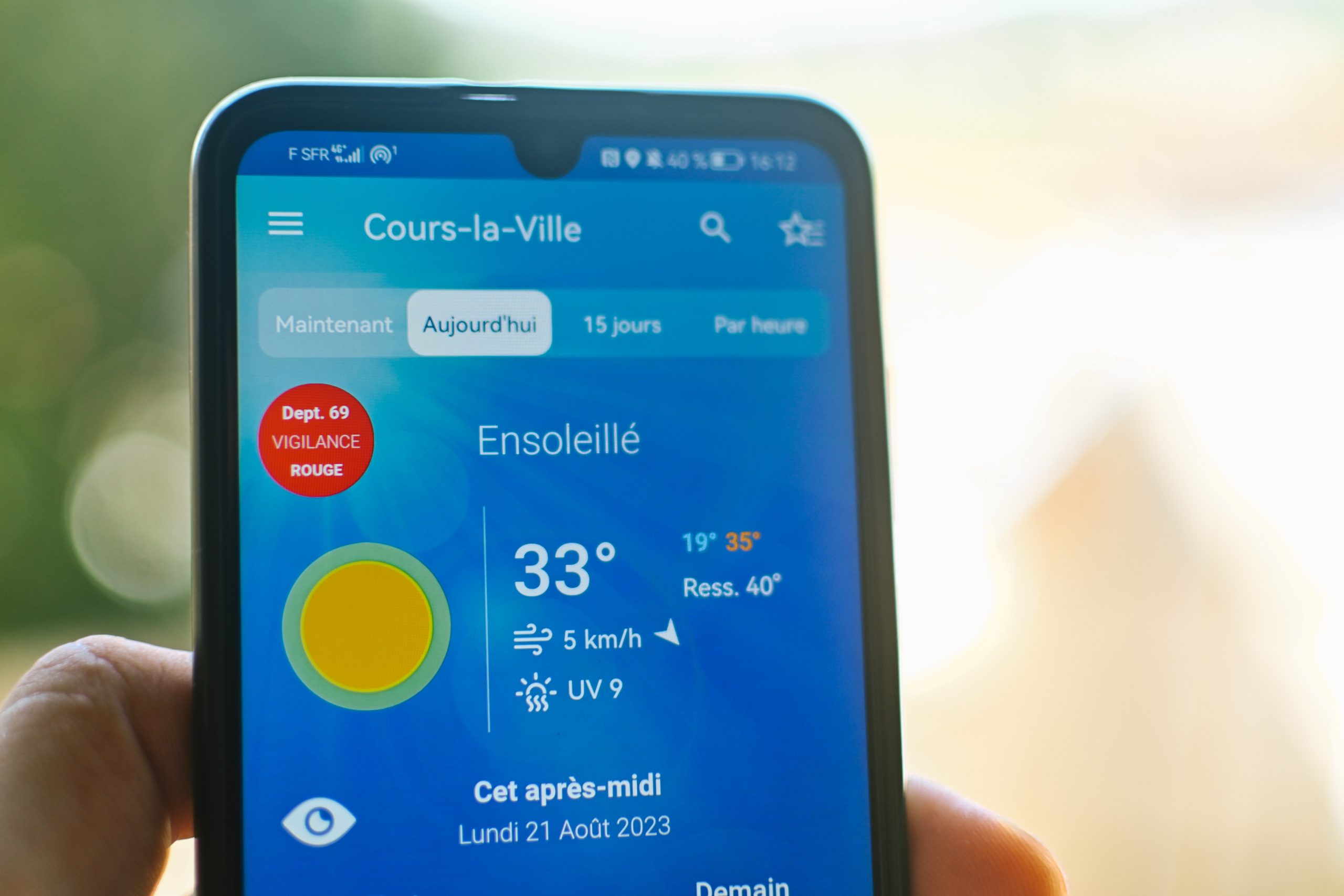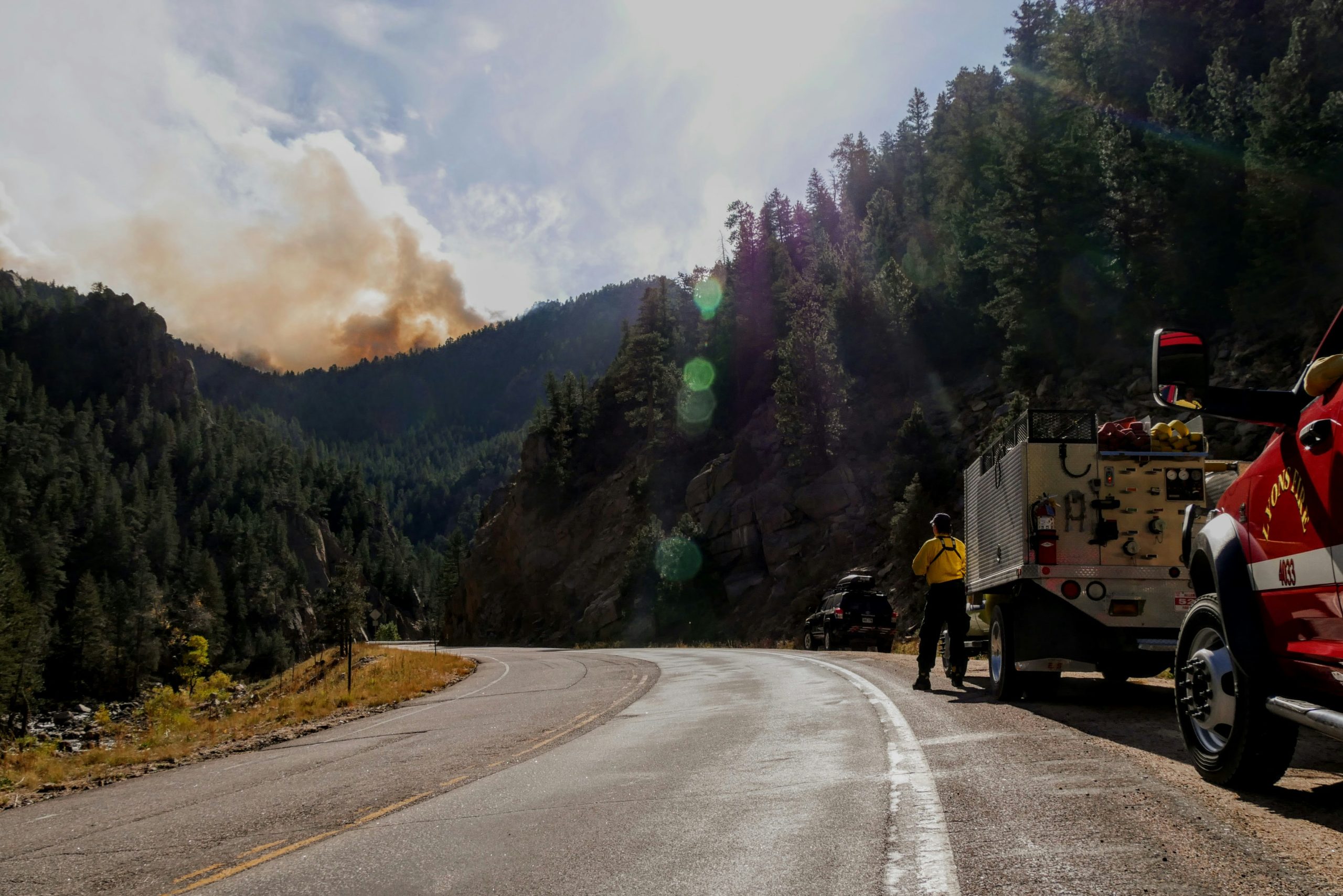Technology in the fight against wildfires
Insights from our climate gaming and technology expert
By Shayne Hayes Wed, Aug 27, 2025
What is the disaster response series?
The Climate Resilience Center’s experts and fellows explore specific natural disasters across the world. These analyses move beyond breaking news: our experts take a deeper look into how cities respond to disasters and what opportunities emerge for future efforts. They assess the trends and solutions that shape the future of climate resilience. And they share exclusive findings and recommendations for strategists and policymakers around the world on how communities can better prepare for and respond to the climate crisis and its intensifying impacts.
Main page | The aftermath of the California wildfires | The financial costs of the California wildfires
In the midst of the Pacific Palisades fire in Los Angeles, the city’s main route was gridlocked. On any other day, this iconic Pacific Coast Highway provides breezy overlooks of the ocean. But on January 7, 2025, residents called the view “an apocalypse.” With flames fast approaching, drivers half a mile inland were forced to abandon their vehicles and flee on foot for the beach.
Many who fled brought their keys with them out of habit, leaving hundreds of abandoned cars in the way of emergency vehicles. The fire department had to bring in bulldozers to clear away the vehicles. Media outlets began to stress the importance of leaving keys in the ignition when you’re forced to flee your vehicle. Despite these warnings, nearly 200 vehicles were pushed off the road during the disaster.
In life-threatening situations, it’s easy to overlook how small behaviors like leaving your keys can impact emergency responses. Resilience isn’t just about resources, but also the small actions people take before, during, and after crises. It’s about checking in on your neighbors in the middle of a heatwave or calling an emergency number at the first sign of a wildfire. It’s about pre-packing evacuation kits and carefully assessing when it’s time to leave.
The case for climate technology
In the aftermath of the Los Angeles fires, once tight-knit neighborhoods were displaced and fragmented. Only one in ten people who lost their homes in Pacific Palisades ended up within fifteen minutes from where they lived.
So, technology became even more critical. Studies have found that phone calls spike, with a one thousand percent increase in overnight emergency calls during Hurricane Milton in Florida. Social media now also serves as a critical platform for those displaced. From organizing local supply sharing to navigating insurance claims, social media has been a cornerstone of resilience and recovery.
Six months after the fires were contained, Governor Gavin Newsom recently announced a collaboration with an Australian artificial intelligence (AI) company. AI is used to “pre-validate building designs against local codes,” streamlining code compliance processes as thousands of homeowners and businesses submit permit applications to rebuild. With examples of climate technologies still making headlines, it is clear that technology has become an invaluable part of disaster recovery.
How did the city respond?
The Eaton fire in Los Angeles demonstrates what is at stake when technologies and systems aren’t prepared. While the city and state have wildfire alerts, some residents in Altadena never received evacuation warnings. Others received their first warning in the middle of the night. The seventeen fatalities from the Eaton fire all occured in the neighborhoods that failed to receive alerts. When residents are left without clear directions and early warnings, their behavior may not only impede the efforts of first responders; they could be life-threatening.
Altadena is not the only community where alert systems failed. Emergency systems across the United States have buckled under the demands of more sudden and intense wildfires. To fill the gap, many are turning to non-governmental alert systems such as Watch Duty, which monitors emergency radio channels and publishes information on firefighting efforts in real-time. With wildfires becoming unseasonable, resilient alert systems are urgently needed to keep communities safe.
However, even with proper and timely alerts, residents must be prepared to act. Even if they receive information to evacuate, they need to understand the best actions—like leaving keys in the ignition of abandoned cars. So, that’s where we can turn to digital games to build awareness before wildfires strike.
What role can climate games play?
In collaboration with Sea Monster Entertainment, an impact-focused game studio in South Africa, the Climate Resilience Center is developing a platform to equip developers in the Global South with everything they need to bolster preparedness through games. The studio and the Climate Resilience Center are working to create a pilot game to model this effort. During the storyboarding phase, Sea Monster Entertainment worked closely with local firefighters in South Africa. Their recommendations and insights shaped the written scenarios for a choose-your-own-adventure style emergency preparedness game.
The result is a free and locally-relevant resource for emergency preparedness that can be accessed by anyone with a smartphone, even if they have limited data. The technology can be applied to a wide range of scenarios, from identifying early signs of heat exhaustion to knowing how to safely flee during a fire. These behavioral interventions could save emergency responders valuable time and resources.
Building resilience in the aftermath
Behavior change is not easy or straightforward. Social psychology has taught us that awareness is simply not enough to bring about lasting change. Instead, new behaviors must be reinforced through feelings of agency. Essentially, it’s not enough to tell people how to prepare for emergencies. People need to see themselves as good at preparing for emergencies, and see these skills valued within their social circle.
Technology plays a crucial role in shaping these behaviors. Text alert systems, for example, help orchestrate evacuations. However, the Los Angeles wildfires reveal an urgent need to use technology proactively. While disaster alerts are an essential tool, technology could also be used to build emergency response skills well before disaster strikes.
As wildfires and other disasters grow more frequent and intense, community leaders should think critically about how they can improve and prepare existing technologies and invest in new solutions to raise awareness.
Recovery plans must be considered before disasters strike. City officials need to assess their technologies, infrastructure, and educational outreach to save response time and, consequently, lives. By leaning on technology as a means of emergency preparedness, we can make communities more resilient even when other systems fail.
This article was written by Shayne Hayes with contributions from Grant Shonkwiler.


